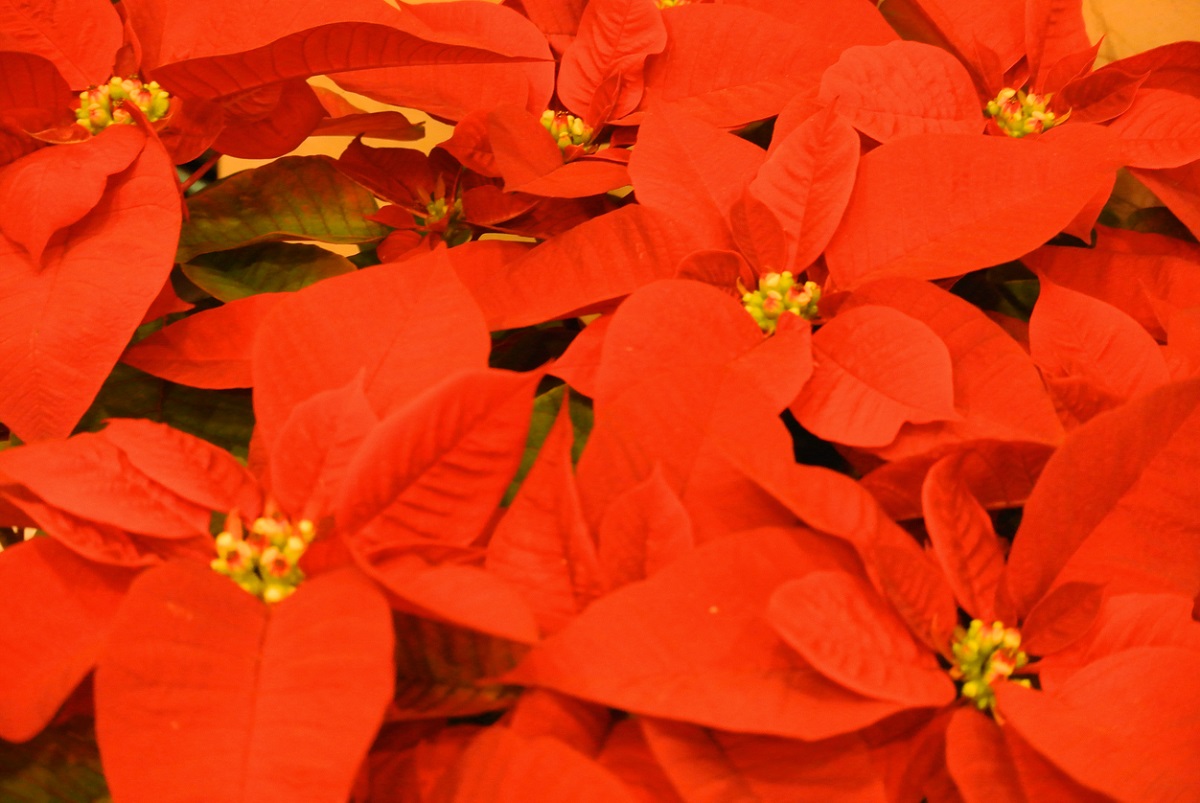
Orange Poinsettias Developed Using CRISPR-Cas9
June 2, 2021| |
European scientists were successful in developing the familiar red poinsettias to a variety with orange bract color using CRISPR-Cas9. This provides a new option in ornamental flower breeding and could be of relevance for other cultures like chrysanthemum and dahlias where radiation breeding is currently used to produce new colored varieties.
The scientists from Austria and Germany performed the knockout of flavonoid 3'-hydroxylase (F3'H) using CRISPR-Cas9 in the ‘Christmas Eve' variety of the poinsettia (Euphorbia pulcherrima). Previous documents have identified F3'H as an enzyme necessary for the formation of cyanidin type anthocyanins which are responsible for the red color of the plant's bracts. By partially deactivating the enzyme, the bract color of the transgenic poinsettia turned from vivid red to vivid reddish-orange and the cyanidin levels were also found to be significantly decreased compared to the wild type. This is the first time that successful targeted mutagenesis with the CRISPR-Cas9 system was done in poinsettias supporting that CRISPR-Cas9 can be an alternative to the process of irradiated mutation for breeding of color variation, which is currently the standard practice in poinsettia breeding.
Read the original article in Plant Cell, Tissue and Organ Culture to learn more.
| |
You might also like:
- Researchers Develop Pale Purplish-Pink Petunia via CRISPR-Cas9
- Dutch Scientists Decode Tulip Genome, The Biggest Genome Ever Sequenced
- Pocket K No. 47: Biotechnology in Ornamental Plants
Biotech Updates is a weekly newsletter of ISAAA, a not-for-profit organization. It is distributed for free to over 22,000 subscribers worldwide to inform them about the key developments in biosciences, especially in biotechnology. Your support will help us in our mission to feed the world with knowledge. You can help by donating as little as $10.
-
See more articles:
-
News from Around the World
- International Research Team Identifies Pathway for Accelerated Plant Flowering in Low-Nitrogen Soils
- ISAAA Webinar: What is Gene Drive?
- Over 2,000 Nigerian Farmers Reaping the Benefits of Biotechnology
- Canada Approves HB4 Drought Tolerant Soybeans
- Study Finds Key Protein in Plant's Response to Nitrogen Deficiency
- GM Maize Adoption Increases by 31% Every Year in the Philippines, Benefiting More Resource-poor Farmers
- Scientists Call for International Investment to Tackle Major Wheat Losses
- Scientists Provides New Tool in Breeding More Climate-Resilient Cole Crops
-
Research Highlights
- Researchers from China, Czech Republic, and USA Report Reference Genome for Maize B Chromosome
- GE Potato Plant Responds to Stress by Glowing
-
Plant
- Orange Poinsettias Developed Using CRISPR-Cas9
- International Trade in Crops with New Breeding Technologies: The Australian Perspective
-
Read the latest: - Biotech Updates (December 17, 2025)
- Gene Editing Supplement (December 17, 2025)
- Gene Drive Supplement (February 22, 2023)
-
Subscribe to BU: - Share
- Tweet

